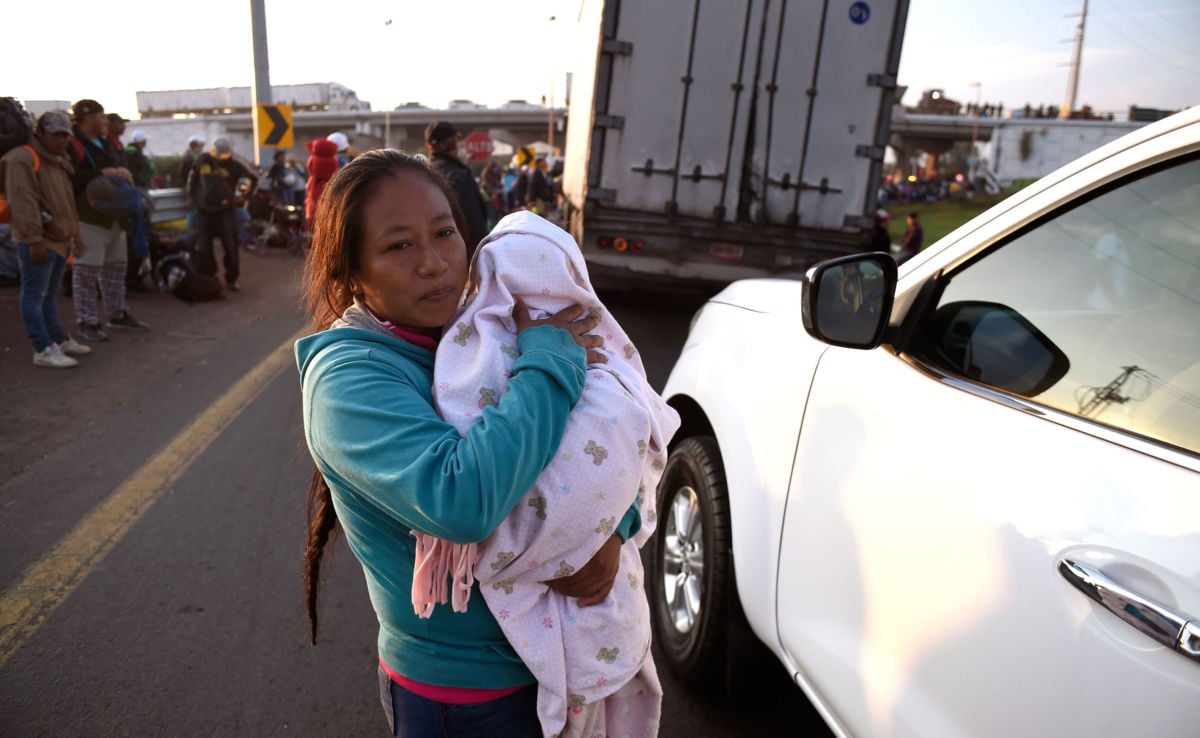The “caravan” of hopeful immigrants from Central America that was tear gassed by the US government on November 25 continues to be shamelessly exploited as political fodder. Trump depicts the immigrants as a security threat to the US, while Democrats like Congresswoman-elect Alexandria Ocasio-Cortez compare the Central American immigrants to Jews fleeing Germany because of the threat of physical violence and death in their own country. But both these narratives overlook one of the main contributors of the migrant caravan.
The Southern border has seen a sharp increase in the number of Guatemalans trying to enter the US, starting in 2014. That was coincidentally the first year of a severe drought tied to an extreme El Niño that struck Central America’s “Dry Corridor,” which includes Guatemala, Honduras and El Salvador, collectively known as the Northern Triangle. El Salvador’s rivers are drying up and Guatemala’s semiarid region is expanding. Temporary relief from the drought has only come from occasional, devastating flooding, which has only added to the destruction of crops. One-third of all employment in Central America comes from agriculture, and that is now failing across the entire region.
Guatemala is ranked as one of the top 10 of the world’s nations most vulnerable to the climate crisis — meaning an agricultural crisis that is now evolving into a human crisis. The current weather patterns wreaking havoc on Central American agriculture are consistent with what climate scientists have predicted, and climate models indicate it will only get worse. Those areas of the world prone to drought will see even less precipitation (like the American West), and those that see too much will get even more, with overall temperatures on the rise.
An inter-agency study from the United Nations interviewed families trying to leave Central America. The report revealed that the driving force for this exodus was not violence per se, but the drought and its downstream consequences — lack of food, no income and no work — all related to crop failures.
Eduardo Méndez López is a subsistence farmer in Guatemala and was interviewed by National Geographic. The multi-year drought completely wiped out his corn fields. His source of food is rapidly dwindling; he has no income; and he soon will have no way of feeding his six children. “This is the worst drought we’ve ever had. We’ve lost absolutely everything. If things don’t improve, we’ll be forced to migrate somewhere else. We can’t go on like this,” he told National Geographic. The reporter described the physical appearance of López and his neighbors as gaunt and “skin stretched thin over bone” after being forced to survive for months on corn tortillas and salt.
It’s not just subsistence farming that is being threatened by climate change in the Northern Triangle. Cash crops like coffee have been decimated by the drought and another climate-related plague called “leaf rust,” a fungus that used to die with cool evenings, but no longer does because of warmer night time temperatures.
Robert Albro, researcher at American University, says, “The main reason people are moving is because they don’t have anything to eat. This has a strong link to climate change – we are seeing tremendous climate instability that is radically changing food security in the region.” Almost half of Guatemalan children under 5 years old suffer malnutrition. In rural areas of the country, it’s 90 percent. A World Food Program analysis found that nearly half of migrants from El Salvador, Honduras and Guatemala cited food insecurity as a reason for their leaving their home countries.
Children and teenagers are dropping out of school because their families have no money for supplies. Entire villages are unraveling because there is no money to plant another crop and not enough government help. Even more people would abandon their homes but have no money for transportation. Rural Guatemalans are foraging the landscape in search of wild malanga roots in a desperate attempt to feed themselves.
Global temperatures have been above average for 406 straight months. At the current rate of greenhouse gas emissions, by 2100, the world can expect 2 billion of its inhabitants to become climate refugees like the Central American caravan. As required by law, the federal government just released the latest National Climate Assessment, a 1,600-page report from more than 300 scientists from 13 federal agencies, including the Department of Defense, the Environmental Protection Agency and NASA. The overriding theme is that the United States is already being adversely impacted by climate change and it will continue to get much worse; the economic impacts will be enormous and time is running out to do something about it.
President Trump says he doesn’t believe the report, and continues with public statements as ridiculous as, “I want great climate, we’re going to have that.” He has decried “globalism,” extolled “nationalism” and forced the United States to become the only nation to withdraw from the Paris Climate Accord. But there is no wall tall enough, or Border Patrol massive enough, to stop either the “global” or the “national” consequences of the climate crisis.
Trump is training guns and tear gas on the trickle of human suffering inching toward our border. But that trickle will become a raging torrent if the United States continues to deny the climate crisis, its role in causing it and its responsibility to help alleviate it.
Press freedom is under attack
As Trump cracks down on political speech, independent media is increasingly necessary.
Truthout produces reporting you won’t see in the mainstream: journalism from the frontlines of global conflict, interviews with grassroots movement leaders, high-quality legal analysis and more.
Our work is possible thanks to reader support. Help Truthout catalyze change and social justice — make a tax-deductible monthly or one-time donation today.
